#yggdrasil world tree art
Explore tagged Tumblr posts
Text

An infographic of the Nine Realms for those that love Norse mythology. It is an abstract representation that is designed to show the realms in a way that closely resembles the descriptions of the Eddas. Each shows some features and inhabitants that make the realm distinct, and it shows how the realms connect to each other and Yggdrasill. In reality, all realms would be nested within each each other and fit somewhere on our planet (either in a physical location or in an invisible spiritual location).
Heavenly Realms (upper level):
_____________________________
* Ásgarð - Home of the Æsir. Each God rules over a kingdom and has his own palace within Ásgarð. Óðinn rules the realm from his high throne. The Einherjar make the palace of Valhall their home. 1/2 of the greatest slain warriors are chosen by the Valkyries to join Óðinn's army and await their final battle against the invading armies of Giants at Ragnarok.
(In this image you can see Óðinn standing at the entrance of Valhall, monitoring the training of his warriors)
* Vanaheim - Home of the Vanir. Once enemies of the Æsir, but now their tribes have been unified. Freyja rules over this realm and other half of the Einherjar join Freyja in Fólkvangr where they train until Ragnarok.
(In this image you can see Freyha and one of her cats leading her warriors in drills)
* Álfheim - Home of the Álfar (Elves). Noble nature spirits that are allies of the Æsir Gods. Elves have dominion over nature and inhabit sacred hills, streams, or groves where they keep the land healthy and prosperous with their magic.
* Gimlé - In Ásgarð nearbye Álfheim exist other minor heavenly kingdoms, like Viðbláinn. Here a palace sits high in the mountains called Gimlé, where the souls of the righteous go after death. It is also where the last surviving Gods will seek shelter from the fires of Surtr in the final days of Ragnarok.
* Bifröst - The Rainbow Bridge. This brightly colored bridge provides a path for the Gods to quickly travel from Ásgarð to Miðgarð. It burns with magical flames that will incinerate any Frost-Giant or Hill-Giant that attempts to invade the home of the Gods. But the Sons of Múspell are immue to the flames, since they are Fire-Giants, and will collapse the bridge as they charge over it to destroy Ásgarð during Ragnarok.
_____________________________
Yggdrasill:
_____________________________
* Yggdrasill - The World Tree. This mighty Ash has roots that run far and wide, connecting all the realms. Yggdrasill also houses a pair of humans that will emerge and repopulate the world after Ragnarok. Long ago, Óðinn hanged himself from this tree to learn the secrets of the magical runes
* Urðarbrunnr, Mimisbrunnr, & Hvergelmir-
Yggdrasill stands next to the Urðarbrunnr (well of Urð. Urð is the eldest sister of the 3 Norns, Giantesses that weave the strands fate into an intricate tapestry, which reveals the destiny of all living things. The waters of this well have healing properties and the 3 sisters anoint the roots of Yggdrasill daily to stave off decay.
(In this image the 3 Norns can be found standing beside the Urðarbrunnr)
One of Yggdrasill's primary roots travels into Jotunheim, where it drinks from the Minisbrunnr (Mimir's Well). This is the well where Óðinn sacrificed his eye in order to gain his great wisdom by drinking from the well.
The final primary root of Yggdrasill runs into Niflheim, to the Hvergelmir. This well of boiling water is home to numerous serpents and the terrible wyrm, Niðhoggr. These beasts gnaw upon the root, slowly killing it with their venom.
* Hraesvelgr, Ratatoskr, Niðhöggr, Veðrfölnir, & Eikthyrnir - These creatures live in or near Yggdrasill and interact with each other and the world's -
Hraesvelgr sits high in the top-most branches, flapping his broad wings to create the winds. Veðrfölnir is a hawk that sits between the eagle's eyes and he may act as an informant for the eagle, like Huginn & Muninn.
Niðhöggr periodically travels to the opposite shore of the Hvergelmir, near Helheim. This shore is known as Náströnd (the Corpse Shore) and while there the wyrm drinks the blood of the newly arrived damned souls (oath-breaketlrs, adulterers, and murderers).
Ratatoskr is a squirrel that runs up and down the roots of Yggdrasill, so he can relay hateful messages between Hraesvelgr and Niðhöggr.
Eikthyrnir is a stag that feeds upon the leaves of Yggdrasill above Valhall. Dew gathers on his antlers and drips down to the Hvergelmir where it becomes the source of many rivers. In some accounts there are 4 stags, but this may be a later alteration to the story.
_____________________________
Mortal Realms (middle level):
_____________________________
* Miðgarð - The realm of men. The Gods frequently travel to Miðgarð to entertain themselves, influence humanity, or slay invading Giants. Thór, the Bane of Giants, is the protector of Miðgarð.
(In this image you can find Thór, the protector of Miðgarð, has just made his way across the Bifröst)
* Niðavellir - Home of the Dvergar (Dwarfs). These magical beings are nature spirits, related to the Elves, but not divine like their cousins. They shelter under the earth where they are safe from the deadly sunlight and craft marvelous magical weapons and tools for Kings and Gods. Sindri, the most famous of Dwarfs lives in this land.
* Svartálfheim - Home of the Svartálfar (Dark Elves). These Elves are craftsmen like the Dwarfs and are frequently identified as Dwarfs due to their similar appearance and lifestyle. The most well-attested Dark Elves in the Eddas are the smith brothers, onown as the Sons of Ivaldi.
* Miðgarð Sea - This vast body of water surrounds Miðgarð to protect the world from the vicious Giants on the other side. Jörmungandr, the World Serpent, makes this his home after being tossed into the water by Óðinn. Over the centuries he has grown so large that he now encircles the entire world. Beneath the waves lay Rán's Hall, the Goddess of the sea makes ready her home for the poor souls that drown at sea.
* Jötunheim - Home of the Hill-Giants. The Kingdoms of Útgarð (King Útgarða-Loki) and Thrymheim (Skaði) are found here. In the Eddas we hear how Thór and Loki have travelled to Jotunheim many times seeking adventure or revenge.
_____________________________
Primordial Realms (lower level):
_____________________________
* Ginnungagap - In the beginning there was a vast yawning void, a featureless plain standing in the darkness, and absent of life. From this land emerged 2 realms: Múspellheim to the south and Niflheim to the north.
* Múspellheim - This volcanic realm is home to the primordial Fire-Giant, Surtr. His army, the Sons of Múspell, is the most powerful and destructive army in the world. Surtr patiently waits for the day he is destined to lead the invasion of Ásgarð. After the world was created, the Gods and Dwarfs gathered sparks and embers from Múspellheim and used them to craft the Sun, Moon, and stars, so that the sky would be illuminated and men could track the seasons.
* Niflheim - This frozen realm is the home of the dead. All humans that are not granted access to one of the other realms to live out their afterlife are destined to reside here. Hel was banished to Niflheim, where she rules over these damned souls. But she was not the first ruler of this realm. In the beginning, the enormous Frost-Giant called Ymir became the first living being to inhabit the world. He would father the tribes known as the Frost-Giants and Hill-Giants, but he was slain by Óðinn, Vili, and Vé. These 3 brothers re-purposed his massive corpse, fashioning it into Miðgarð.
Source: Aaron Chapman (2023)
From: Everthing Norse & Vikings Culture [Facebook]
#Aaron Chapman#Yggdrasil#yggdrasil#Yggdrasil art#yggdrasil art#Yggdrasil World Tree#norse mythology#norse myths#world tree art#everthing norse & vikings culture#norse mythology art#norse pagan#norse paganism#Travelling the World Tree#Nine Realms#nine realms art
20 notes
·
View notes
Text
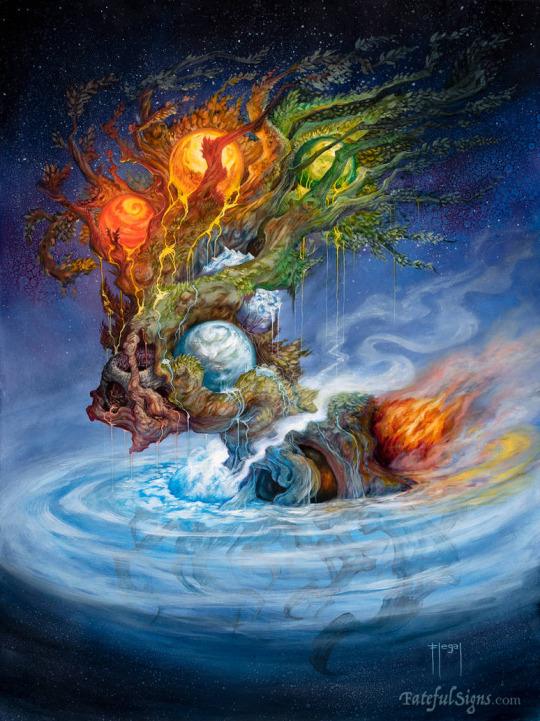
Worlds Beginning🌳🪐♾️
By:
https://www.deviantart.com/samflegal/gallery
#yggdrasil#fantasy#digital art#digital painting#deviantart#fantasy art#viking art#norse art#norse religion#paganism#pagan art#world tree#viking aesthetic#viking mythology#norse mythology#Norse myth
72 notes
·
View notes
Text

Tree of Many Worlds
#art#ai artwork#william t. ayton#ai art#ai generated#artists on tumblr#ai#leonardo ai#visionary#mystical#Bing AI#yggdrasil#world tree#cosmos#universe#nebulae
7 notes
·
View notes
Photo

Celtic beliefs in trees (12)
N for Nion (Ash) - February 18th - March 17th
“The World Tree, Tree of Life - Third month of the Celtic tree calendar”
Colour: white; Stars: Sun, Neptune; Gems: turquoise; Gender: female; Elements: air, water; Patrons: Odin, Nemesis, Poseidon, Neptune; Symbols: balance + harmony, cosmic power, positive thinking, power of the sea
Ash is native to northern Europe and the British Isles, grows well on moist limestone soils and is one of the most common trees found in lowland forests. It is a graceful tree with thin, bird's-feather-like leaves and grey bark. The leaflets are usually odd-numbered, and finding a leaf with an even number of leaflets is said to bring good luck, the same as a four-leaf clover.
In the old days, wearing green ash bark as a garter would repel a wizard's curse, and eating ash buds on the night of the summer solstice would nullify a spell of witchcraft. The ash leaves were also believed to bring luck in love and building wealth. Sleeping with a young leaf under your pillow is said to bring psychic dreams.
Ash forms the centre of belief in a number of ancient cultures. In Greek and Norse mythology, the first humans were born from ash trees. Such ash trees were always cherished by the ancient Irish as trees with very magical powers. According to the lore of the ancient Irish olavs ( ollamh, ollam: one of the highest ranks of druids), these trees were cut down in 665 BCE. This would seem to indicate that Christianity uprooted paganism in ancient Ireland.
For the Celts, the ash tree, symbolising the cosmic order, held the key to the truth of the universe. The Druids referred to the different phases of existence as the 'three rings of existence'. This eternal 'trinity' can be interpreted variously as 'past, present and future', 'body, mind and spirit' or 'chaos, harmony and creation'. Since the rings of existence cannot be unrelated to each other, what happens at one level will spill over to the other two levels. Every action causes a reaction and nothing is complete on its own, the Celts believed. We are part of the elements that make up the cosmic order, and in the endless cycle of life, we can never escape its flow. For the Celts, the ash was such a guardian of the universe.
According to Norse legend, the ash tree is the world tree, the Yggdrasil that occupies the centre of the universe. All events take place around the ash tree. And its roots and branches travel around the world, symbolising the universality that connects the world of God, this world and the underworld.
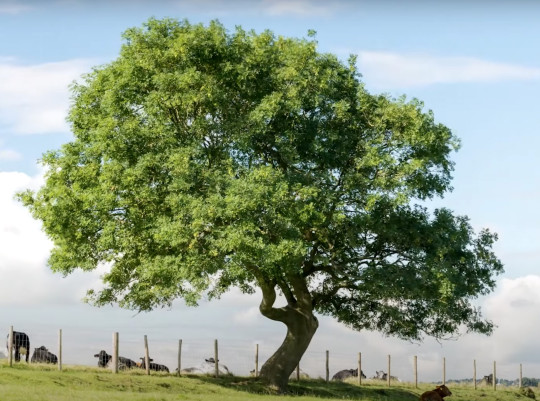
木にまつわる伝説・神話
ケルト人の樹木の信仰 (11)
NはNion (トリネコ) - 2月18日~3月17日『世界樹、生命の木〜ケルトの木の暦の第3月』
色: 白; 星: 太陽、海王星; 宝石: トルコ石; 性: 女性; 要素: 空気、水; 守護神: オーディン、ネメシス、ポセイドン、ネプチューン; シンボル: バランス+調和、宇宙の力、ポジティブ思考、海の力
トリネコは北ヨーロッパとイギリス諸島が原産��で、湿気を含む石灰岩土壌でよく成長し、低地に広がる森で最もよく見られる木のひとつ。鳥の羽根ような薄い葉と灰色の樹皮をもつ優美な木である。葉片はふつう奇数で、偶数葉片をもつ葉を見つけたら幸運が訪れると言われるのは、四つ葉のクローバーと同じである。
昔はグリーン・アッシュの樹皮をガーターがわりに身につけていると魔術師の呪いを跳ね返し、夏至の夜にトネリコの芽を食べると魔女の魔法を無効にすると言われていた。トネリコの葉は恋愛運をもたらし、財産を築くと考えられ、若葉を枕の下に入れて眠りにつくと予言的な夢をみるとも言われている。
トリネコは古代の数多くの文化の中で、信仰の中心を成している。ギリシャ神話や北欧神話では、最初の人類はトネリコの木から生まれたとされている。そんなトネリコの木を古代アイルランド人は非常に不思議な力を持つ木としていつも大切にしていた。古代アイルランドのオラヴ (ドルイドの最高位のひとつ)たちの言い伝えでは、これらの木は紀元前665年に切り倒されたとなっている。これはキリスト教が古代アイルランドの異教を根こそぎにしたことを物語っていると思われる。
ケルト人にとって、宇宙の秩序を象徴するトネリコは、宇宙の真理を知る鍵を握っていたのである。ドルイドたちは、存在のさまざまな段階を「存在の3つの環」と呼んでいた。
この永遠の「三位一体」は、「過去・現在・未来」、「肉体・精神・霊」、「混沌・調和・創造」など、さまざまに解釈することができる。存在の環は互いに無関係ではいられないので、あるレベルで起きたことは他の2つのレベルにも波及することになる。すべての行為は反作用を引き起こし、それだけで完結するものはない、とケルト人は考えていた。私たちは宇宙の秩序を構成する要素の一部であり、無限に循環する生命という存在において、決してその流れから逃れることはできないのものである。ケルト人にとって、トネリコはこうした宇宙の守護神であった。
北欧の伝説によれば、トネリコは世界樹、宇宙の中心を占めるユグドラシル。すべての出来事はトネリコの木の周辺で起こる。そして、その根と枝は世界中を巡り、神の世界と現世、黄泉の国を結ぶ普���性の象徴である。
#trees#tree myth#tree legend#mythology#legend#folklore#ash tree#celtic mythology#tree of life#world tree#yggdrasil#norse mythology#druids#celtic tree calendar#the third month#cosmic power#philosophy#nature#art
146 notes
·
View notes
Text

I wanted to introduce one of my OCs: Asker Quang! He's a peregryn and came to the palace of dawn court at 26 to become a soldier even though the reason he started training the traditional peregryn fighting style was, that he wanted to learn more about wounds and the body in general to become a better healer. But because Thesan's father was a bit more conservative he had a hard time to get acknowledged as a healer. He's really good at it though, a damn nerd. Besides healing, he spends his free time drawing (anatomical sketches) and training, which he still likes nonetheless. After he finished his studies he took it on himself to write a book about wings and how to heal them (with additional illustrations if course). Regarding that he's the healer with the best grades in the last couple of years, his skills and knowledge comparable only to Thesan himself, they're good friends. The two of them bonded especially over their common learning of the old language (which Thesan had to learn since he is the heir/High Lord and which Asker just wanted to learn because why not (nerd (affectionately but shh don't tell him that))) Anyway, he's also an Enfp, if anyone wants to know
#this is far more detailed than it should be#and I even left things out#He hasn't finished the book yet btw#bc when he met his mate (my other oc) he met an illyrian so he also wants to add his knowledge of their wings#he also is a seer#right now (acosf) he's 115#kinda regret naming him the way I did as it isn't an asian/vietnamese name#(if you've read my other post I said that i personally based the peregryn on vietnam)#but the name itself is hilarious#It either means soldier in turkish or ash tree/god and spear in a norse language#I especially like the meaning of ash tree because in norse mythology the world-tree (yggdrasil) is an ash and it's a sign of life#which is cool bc he's a healer#but also a bit morbid bc he's a fae an ash wood would kill him#anyway#peregryn#dawn court#acotar oc#thesan#winged oc#acotar fanart#art#art of the day#woman artist#aphantasia artist#aroace artist#digital art#ibispaintx#artists on tumblr
2 notes
·
View notes
Photo
I play a game with myself sometimes. I look for connections between the stories of different cultures. This picture is a good starting place.
Ravens - In Norse Mythology you have Odin’s Ravens, Huginn and Muninn. Raven the Trickster appears in many Native American or First Nation stories. The Australian Aboriginal people have stories of a Trickster Crow or Raven. Ancient British tales say that the country will only thrive as long as there are Ravens in the Tower of London. Bran the Blessed’s name literally means Raven, from the Mabinogion. Ravens fed Elijah in the Christian Bible.
The Tree- Norse myths have Yggdrasil (no I can’t pronounce it). There is a tree of life in the Cabala and in Celtic tales. Keep looking, you will find more associations.
What symbols did I miss in this picture?
This is a teaching game. Now that you have the idea, apply it to learning Tarot.

by Emil Maxén
#witchblr#crone#magic#pagan#witch#familiar#magical art#world tree#Yggdrasil#Huginn and Muninn#ravens#birds#Emil Maxen#teaching game#tarot#witch tips#teaching tarot#Celtic#Norse#wisdom
4K notes
·
View notes
Text


'The tree on his chest is meant to be Yggdrasil, the World Tree that ties all Nine Realms together. Since Heimdall is the watcher of these realms, the amber jewel on his chest is the same colour as his eyes. Heimdall sees all!' - The Art of Thor: The Dark World
79 notes
·
View notes
Text
Numerology: The number 9
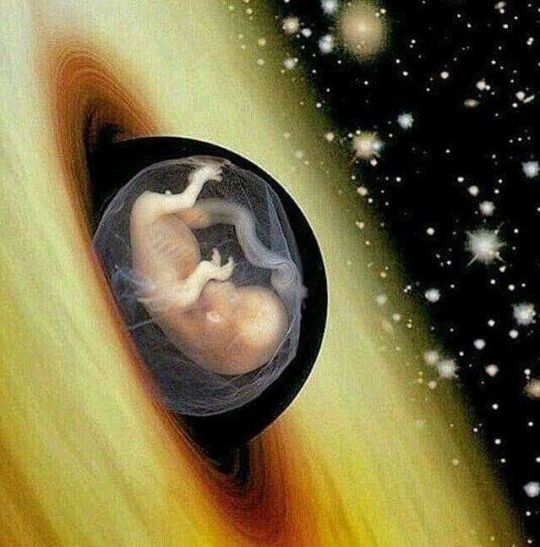
9 18 27 36 45 54 63 72 81 90 99
What does the number 9 signify? 9 means completion, but not a final ending.
In astrology: the number 9 is associated with the planet Mars, which is said to govern ambition, energy, and action. People born under the sign of Mars, which is associated with the number 9, are said to be confident, independent, and adventurous. The ninth sign of the zodiac, Sagittarius, is known for its adventurous and expansive spirit, which reflects the qualities of the number 9. Additionally, the number 9 is linked to the concept of karma, which refers to the idea that our actions have consequences that come back to us. This is because 9 is the result of adding up all the single-digit numbers before it (1+2+3+4+5+6+7+8=36, and 3+6=9), suggesting that we reap what we sow. Overall, the number 9 is significant and powerful in astrology, representing completion, growth, and the consequences of our actions. Moreover, in Vedic astrology, the nine planets or Grahas are believed to have a significant influence on human destiny and are associated with different qualities and energies. These planets include the Sun, Moon, Mercury, Venus, Mars, Jupiter, Saturn, Rahu, and Ketu. The Sun and Moon are considered the most important planets, as they are responsible for life on Earth and are associated with the soul and mind, respectively. The number 9 is associated with the planet Guru or Jupiter, which is considered the most benefic planet in the horoscope. Guru is associated with wisdom, knowledge, and good fortune. People who are born on the 9th, 18th, or 27th of any month are said to be influenced by the planet Guru and are considered to be blessed with good luck and prosperity.
In astronomy: the number 9 is perhaps most famously associated with the nine planets in our solar system. the number 9 has significance in the relationship between the Sun, Moon, and Earth. It is said that the Sun completes a cycle of 360 degrees in the sky in one year, which is divided into 12 zodiac signs, with each sign taking up 30 degrees. The Moon, on the other hand, takes about 29.5 days to complete its cycle around the Earth, and during this time, it passes through all 12 zodiac signs. Interestingly, the total number of days in a solar year (365.24) multiplied by the number of lunar months in a year (12.37) equals 4536.24, which can be reduced to 9. This is known as the lunar-solar cycle, and it is believed to be a powerful symbol of completion and transformation.
In mythology: the number 9 is often associated with spiritual growth and knowledge. For example, in Norse mythology, Odin hung from the world tree Yggdrasil for nine days and nine nights to gain wisdom and knowledge. In Greek mythology, nine muses inspired creativity and art, while in Egyptian mythology, nine gods presided over the underworld.
In mathematics: the number 9 has some unique properties as well. It is the highest single-digit number, and any number multiplied by 9 will always result in a number whose digits add up to 9. Additionally, the number 9 is the sum of the first three square numbers (1² + 2² + 3² = 9) and the sum of the first three cube numbers (1³ + 2³ + 3³ = 36). This property of the number 9 is known as the "digital root" and is used in various mathematical and divinatory practices.
In physics: the number 9 appears in the fundamental equations that describe the behavior of the universe, such as the nine-dimensional equations of string theory. In mathematics, the number 9 is used in a variety of numerical systems, including the base-9 system used by the ancient Maya.
In science: the significance of number 9 in science is reflected in its frequent appearance in various scientific phenomena. For instance, the periodic table has nine fundamental types of atoms, known as lanthanides. The human body is made up of nine major organ systems, including the cardiovascular, nervous, and respiratory systems. The electromagnetic spectrum has nine main categories of waves, ranging from radio waves to gamma rays. Sun and Earth: The diameter of the Sun is supposed to be 108 times the diameter of the Earth. The distance from the Sun to the Earth is 108 times the diameter of the Sun. It looks very dramatic and mysterious yet if true its indeed happy mystery. Moon and Earth: The average distance of the Moon from the Earth is 108 times the diameter of the Moon. Furthermore, there are nine planets in our solar system (including Pluto, which is now considered a dwarf planet), and the number 9 also appears in the fundamental equations that describe the behavior of the universe, such as the nine-dimensional equations of string theory. The number 9 also appears in the concept of tides, which are caused by the gravitational pull of the moon and sun on the Earth's oceans. Tides follow a roughly 12-hour cycle, with high and low tides occurring twice a day, resulting in a total of around 9 tides per day.
In ancient Egypt: the number 9 was associated with the nine gods who ruled over the underworld.
In music: the significance of the number 9 in music is rooted in its harmonic properties. The ninth note of a scale, known as the subtonic, is a crucial note for creating tension and leading to the tonic note. This creates a sense of resolution and closure in musical phrases. Additionally, the number 9 appears in musical time signatures such as 9/8, which adds a unique and complex rhythmic texture to the music. The number 9 also plays a symbolic role in music, as seen in The Beatles' "Revolution 9," a groundbreaking experimental track that features various sound effects and spoken word samples. Overall, the number 9 adds depth and complexity to the music, both in its harmonic properties and its symbolic significance.
Nine Muses: In Greek mythology, the Nine Muses were the goddesses of inspiration in the arts and sciences, such as music, poetry, and astronomy. They were said to be the daughters of Zeus and Mnemosyne and were believed to provide inspiration and guidance to human beings.
Nine Worthies: The Nine Worthies were a group of historical and legendary figures from different cultures who were seen as exemplars of chivalry and virtue. They were divided into three categories of three: pagan, Jewish, and Christian. The pagan worthies were Hector, Alexander the Great, and Julius Caesar; the Jewish worthies were Joshua, David, and Judas Maccabeus; and the Christian worthies were King Arthur, Charlemagne, and Godfrey of Bouillon.
Ennead: In ancient Egyptian mythology, the Ennead was a group of nine gods and goddesses who were worshipped in the city of Heliopolis. The Ennead included the god Atum, who was believed to have created the world, and his children Shu and Tefnut, who represented air and moisture, respectively.
Nine Emperor Gods Festival: The Nine Emperor Gods Festival is a Taoist festival celebrated in Southeast Asia, particularly in Thailand, Malaysia, and Singapore. The festival is held in the ninth lunar month and is dedicated to the worship of the Nine Emperor Gods, who are believed to bring good luck and prosperity.
The 9th letter of the alphabet is "I", which is also the Roman numeral for the number 1. This means that "IX" is 9 in Roman numerals, which is why you sometimes see clocks or watches with "IX" instead of "IX" to represent 9.
Islam: Quran says that each and everything of this universe is counted and surrounded by numeric. The 9th chapter of the Qur'an At-Tawbah 'the Repentance', and is one of the last Medinan surahs. The number 9 is the day of Hajj. The Messenger Mohammad participated in 9 of the conquests. And nine Qur’anic verses speak about the prophet Moses. The Arabic letters of the opening in the Qur’an add up to 786=9, 786 is an Arabic numeric value that denotes“Bismillah al-Rahman al-Rahim” the opening phrase of the Holy Quran. It translates as “In the name of Allah, the Most Merciful, the Most Beneficent“. 786 is basically driven from the series of Arabic Numerology called “Abjad“. In Muslim tradition it is known to be the symbolic representation of Allah. But no Islamic scholar has so far been able to explain the origin of this number. In fact, it is not mentioned in the Quran. Ramadan: a time of fasting and spiritual reflection for Muslims, is the ninth month of the Islamic calendar.
Biblical Symbolism: The number nine is found 49 times in Scripture. Its biblical symbolism is tied mainly to the concepts of finality, divine completeness, and judgment. It typically surfaces during pivotal moments of transformation, culmination, or judgment in the biblical narrative. In the divine order of creation, the Lord chose to create a nine-month gestation period for human beings, indicating a time of completeness before birth. The number nine often marks the end of a divine cycle or period. In the context of the Old Testament, every ninth year represented the end of one cycle and the beginning of a new one. The number 'nine' also weaves a pattern of divine judgment throughout biblical history. For instance, the prophet Hosea, inspired by God, declared that Ephraim's destruction would come to the city in the 'ninth' year. In another instance, the ninth hour was marked for Christ's death, symbolizing the largest divine judgement humanity has ever witnessed. Ezekiel 24:1-2 noted the siege of Jerusalem commenced on the 'ninth' day of the tenth month. Adding to its significance, the city's destruction commenced on the 'ninth' day of the fourth month. Nine Attributes of God: The Lord is patient, The Lord is Merciful, The Lord is Gracious, The Lord is Abundant in Goodness, The Lord is Abundant in Truth, The Lord is Loving, The Lord is Forgiving, The Lord is a God that Judges, The Lord is Just. In Christianity, there are nine fruits of the Holy Spirit, including love, joy, peace, patience, kindness, goodness, faithfulness, gentleness, and self-control.
The number 9 is revered in Hinduism and considered a complete, perfected and divine number because it represents the end of a cycle in the decimal system, which originated from the Indian subcontinent as early as 3000 BC. The number 9 is considered a lucky number in many cultures, including in China and Japan, where it is associated with longevity and good fortune. In numerology, the number 9 is associated with spiritual growth, selflessness, and humanitarianism.
In Hinduism: The number 9 has played a significant role in Indian history, culture, and mythology. In Hinduism, there are nine planets, nine forms of Devi, and nine forms of Lord Vishnu. The number 9 is also associated with the Navratnas, which are the nine precious gemstones. According to Hindu mythology, there are nine avatars of Lord Vishnu, including Matsya, Kurma, Varaha, Narasimha, Vamana, Parashurama, Rama, Krishna, and Kalki. These avatars are believed to have appeared on Earth in different forms and at different times to restore balance and order. The number 9 is also significant in other Indian religions and traditions. In Buddhism: there are nine stages of consciousness. Some Buddhists carve have 108 small Buddhas on a walnut for good luck. Other Buddhists, like in Tibet and in Bhutan, they ring a bell 108 times to celebrate a new year. They believed it as corresponding to 108 virtues to cultivate and 108 defilements to avoid. Chinese Buddhists and in the Taoists 108 bead mala (called su-chu), and has three dividing beads, so the mala is divided into three parts of 36 each. Chinese astrology also believed that there are 108 sacred stars. while in Jainism, there are nine tattvas or principles of reality. The number 9 is also associated with the nine chakras, or energy centers, in the body. Nine Gems: The Navratnas, or nine gems, are considered to be powerful and auspicious in Indian culture. These include diamond, pearl, ruby, emerald, yellow sapphire, blue sapphire, hessonite, cat The significance of the number 9 can also be seen in Indian architecture and art. For instance, the famous Hindu temple, Brihadeeswarar Temple, located in Thanjavur, Tamil Nadu, was built in the 11th century and is known for its unique architecture that features nine stories, representing the nine planets in Hindu mythology. The temple also has nine entrances, nine corridors, and nine sacred tanks, emphasizing the importance of the number 9 in Hindu culture. Another example of the significance of the number 9 in Indian art is the Navarasas or the nine emotions, which are depicted in various forms of art, including dance, music, and theater. The nine emotions are Shringara (love), Hasya (laughter), Karuna (compassion), Raudra (anger), Veera (courage), Bhayanaka (fear), Bibhatsa (disgust), Adbhuta (wonder), and Shanta (peace). These emotions are believed to be the essence of human experience and are often portrayed in Indian art and literature. Furthermore, the number 9 is also believed to have healing properties in Ayurveda, the ancient Indian system of medicine. According to Ayurveda, the human body is composed of nine elements or dhatus, which are Rasa (plasma), Rakta (blood), Mamsa (muscle), Meda (fat), Asthi (bone), Majja (marrow), Shukra (semen), Artava (ovary), and Purisha (feces). These elements are believed to be interconnected and affect each other, and any imbalance in these elements can lead to illness. Ayurvedic remedies often involve balancing these elements to promote health and well-being.
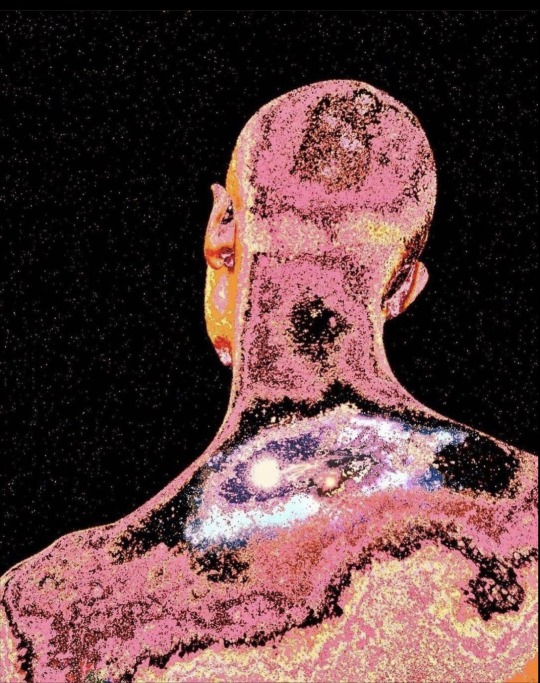
#numerology#vedic astrology#astrology#astronomy#science#greek mythology#hinduism#islam#christianity#bible#holy quran#literature#research#music#ancient egypt#physics#zodiac#zodic signs#astro notes#tarot#chakras#karma#buddhism#jewish#Destiny number#Destiny 9#9 life path#life path#life path 9
49 notes
·
View notes
Text
Chapter 1127 comments & analysis
Strawhats adventure in a mysterious kingdom uncanny valley! This chapter for some reason gives me Silent Hill-like creeps and I thought I would never say that about One Piece lol. It's filled with those tiny little things you can spot only at the corner of your eye or details that make you feel uncomfortable for a reason you can't exactly put into words. It gives similar vibe to the famous Maria scene in the maze, everything seems fine on the surface, but the vibe is offputting.
As much as I enjoy saying "I have no freaking clue what's going on and I love it", I actually do have some guess. But first let me start with the analysis, so you know what details I mean and what I actually consider offputting in this chapter, and at the end of this post I will try to put it all together into a cohesive theory:
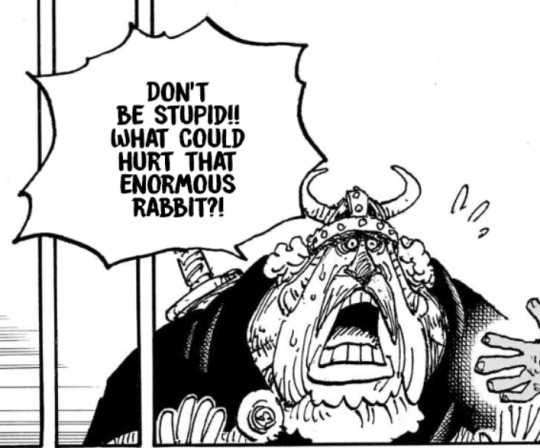

Okay, let's start from the Giant's comment about "enormous" animals. Yeah, they're enormous and huge alright, for the Strawhats. For the Giants? They would be the size of small pets.

Yggdrasil seems suspiciously small too, it should be massive. They also make it sound like their country will disappear if Yggdrasil gets damaged, but it's supposed to be a world tree, not just "this country's tree". Whatever affects Yggdrasil would have to affect the whole world and all the different realms it supports, not just "one country".

This is not how a destroyed lego brick would look like. For those who forgot most of their childhood's toys already, the bricks have to be hollow and have proportionally shaped holes too, otherwise you won't be able to stick them together!

Weird fade to black when Nami and Usopp fell to the ground. One Piece never does things this way.

Now let's take a look at the castle, I adore it, I want it as a lego set, but that's beyond the point. This doesn't look like an actual castle, lots of those towers serve no purpose. It's like someone merged different parts together unsure what's the castle's actual function. It reminds me of very surreal things the early AI art did very often. So this borderline counts as "impossible architecture".
Now let's go for the most fun part of it: inconsistencies in Strawhats clothes, equipment and behaviour!

Nami saying "just zap it!" instead of her "thunderbolt" attack? Never happened before, no matter how stressful the situation was. That's the whole point of Nami's fight with Miss Double Finger, no matter how much her climatact was failing her and how much it put her in danger, she still shouted out every attack's name like it's a sacred ritual.
Nami's belt buckle also changed from oval to square, and her sword is missing a couple of times. Missing once could be considered a coincidence, but it's been missing 6 times! And yes I know Oda often makes blunders like that, but that's way too much and it doesn't affect only Nami.
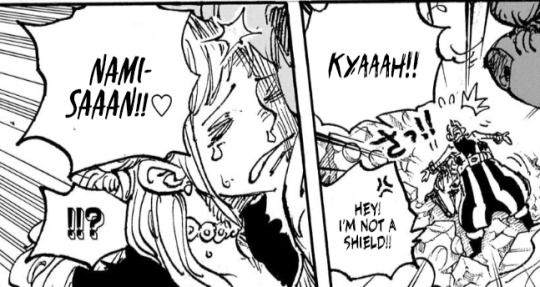
Surprisingly enough, Nami never used Usopp as a shield before. In fact their usual interactions are exactly reversed. Reminder from Wano:

It's basically Usopp treating Nami as a shield.

It's also quite unusual for Nami not to ask about Usopp's wellbeing or not apologize to him for using him as a shield, because Nami usually cares more about his crewmates than this.
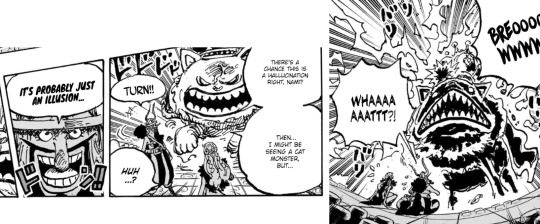
Now let's take a look at Usopp. Not only was he carried in the cat's maw before Nami helped him, he also saw the cat getting zapped. Those are the facts, right? And despite witnessing that he still thinks the cat might be an illusion that can't hurt them, which is weird, because:
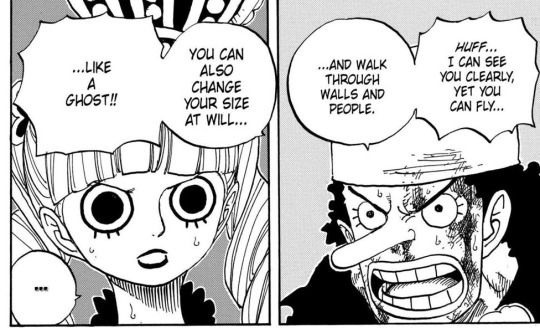
Usopp is definitely more observant than that usually. His reaction should have been more along the lines of "no way, he got zapped and I felt those teeth on me just a moment ago, that was definitely not an illusion".

Also despite knowing Perona's tricks are just tricks, he's still getting scared when he sees her doing stuff like that. Usopp as we know him would not stop to test out if the illusion is real on himself. I wouldn't say he's a coward, but yeah, he is a coward. That's why we like him, right?

Usopp swearing revenge on Nami seems also a bit out of place, considering how impressed he was with Sanji in Punk Hazard. "It's fine if I get hurt, as long as Nami is fine". Usopp wouldn't react with "I'm so proud of you" if he didn't believe in same stuff, right?
Also, occassionally, Usopp's bag disappears.

Sanji's swirly eyebrow randomly switches from left to right.

Some dedicated Sanji fan on tumblr also pointed out Sanji would never say something like that, because he's deadly afraid of most, if not all, bugs. I admit I forgot about that fear of his, so I can't take credit for noticing that myself!
Also in the second picture I posted here, Sanji's attack is called epaule which means a shoulder attack. But he strikes the cat on its head, destroying the crown instead. So that's also another inconsistency.

Luffy's clearly not in G4.
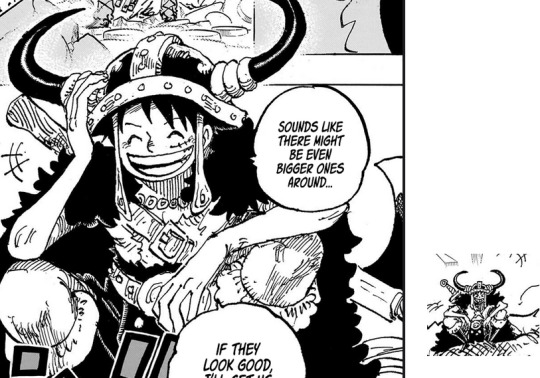
Luffy's weapon randomly changes. At first he has nothing, then a sword, and finally an axe.
Also in one of the translations he says that the rabbit "was tasty enough already" and so he isn't interested in eating the cat. Like hell, Luffy would never say that line. Refusing food? No way.
Summing it up, there's like 3 inconsistencies with each of the Strawhats:
Luffy (his weapon changing, refusing food, Gear 4 attack that isn't G4)
Sanji (not afraid of bugs, his eyebrow switching, his shoulder attack landing on head instead)
Usopp (not observant/not sceptcial and suddenly brave, resentful towards Nami, also his bag is missing)
Nami (not naming her attack, not apologizing to Usopp, her sword missing)
Literally the only character I couldn't find anything wrong with was Zoro. He would definitely comment on lion turning suddenly into a cat, he would wonder where's the ship and how the rest of the crew is doing, and his attack seems accurate.
So, what can we conclude from this? I have two possible directions here. Let's start from the most likely one: Strawhats got kidnapped/spirited away by some supernatural beings. Often fairies are the ones responsible for such incidents (tho mostly kidnapping children). And coincidentally, the alcohol Strawhats drank was called "Green Fairy". It could be the first clue.
In Scandinavian folklore the equivalent of fairies or dwarfs are the trolls and giants living within the hills and mountains or in the deep forests, kidnapping humans to eat them. A troll who learned a child's true name could exert control, making them vulnerable to abduction.

Kidnapping humans to eat them? Might explain human bones scattered around!
Trolls are said to possess magical powers, like shapeshifting and creating illusions, they can transform themselves to look just like anyone, even people that you know well. They can even transform into objects, like a rock, or a ball of yarn to trick people. They also can use their powers to alter people's perceptions. They often show us illusions that seems not exactly correct, because they're based on whatever physicality the trolls themselves can imagine. Trolls sometimes put their gold in the sunlight so it retains its shine, but to prevent it from being stolen they can create illusions so the gold looks like cobwebs in people's eyes—and there are many stories of people visiting fantastic troll halls.
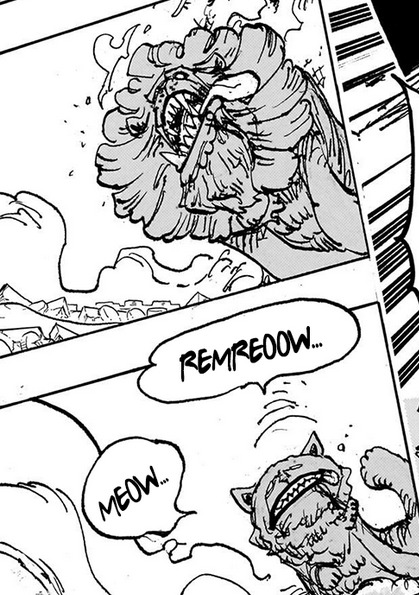
We definitely saw some shapeshifting happening, alright. Most people speculate it's something caused by a devil fruit powers, but it doesn't have to be :)
Trolls are often depicted as living their lives much like humans, with families and communities of their own. No one really knows how trolls truly look like, because of their shapeshifting abilities and many contradictionary accounts about their appearance. Trolls' were also said to be skilled weavers and needlewomen. If you are invited to their place, do not eat or drink or you will be stuck there. If you were spirited away, there was more than one way to protect yourself or get saved; you could use blessings, pure steel or fire against the troll. In Norse tröllskapr can mean wizardry or witchcraft. It's unknown exactly how trolls enter our reality, there are many different concepts about that.
Other possible explanations:
Huldrefolk. They are social, mischievous elf-like beings who live beneath the ground in hills or burial mounds. They often resort to kidnapping people and even forcing marriages with humans. “Huldrefolk” is actually not their true name, but a taboo name meaning “the hidden people” as if it’s dangerous to say their true name. The huldrefolk are invisible, so most people don’t actually know what they look like. Sometimes they're depicted as living normally among humans, but in their own special dwellings, other times they have their own islands on which they live, hidden from our world and perception. Occassionally they can help someone who got lost at sea and transport them to one of their hidden islands. If you find it fascinating and want to find out more about huldrefolk, I reccommend you this article.
Thjazi, the Jotun who can turn into an eagle, could have kidnapped people or giants. He's most known because of this story in which he kidnapped a goddess to steal her immortality apples, thanks to which Giants live for centuries. We do see an eagle emblem in the castle, so that could be a hint or reference to that story:
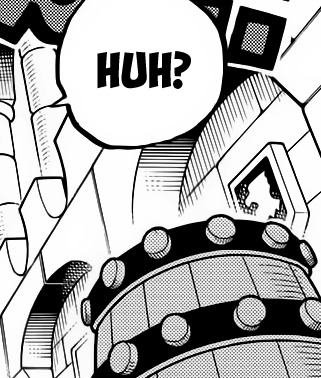
We're not in Elbaf, but in Jotunheim, one of the nine realms in Norse Mythology. That's the realm where only giants live. The description of it doesn't really fit with what we have seen so far of the "mysterious kingdom" though, it's supposed to be fiery and freezing. But it's worthy to note that the description of Ragnarök (the nordic end of the world) states that the Nine Realms are destroyed by fire and flood. And in this chapter we learn that fire is dangerous for this world and might cause it to cease to exist if it reaches Yggdrasil. Could also potentially explain the weird material everything is build from and artificial plants, it could be to prevent fires.
What we're seeing could be an otherworld, one that can easily shatter or break apart like scattered lego bricks. A shaman is a person who can travel between worlds/realms by using a hallucinogenic substance (it's usually mushrooms, but sometimes it's in a form of a drink - Green Fairy could be that), or entering a trance state by, for example, dancing or fasting. The shaman must typically undergo a ritual of death and rebirth in order to acquire their powers to cross dimensions, and we know Luffy and Zoro came back from the dead at least once already.
"Green Fairy" could be actually a drink that came from the gods, kinda like Mead of Poetry. Strawhats are just drunk, but whatever they experience will be prophetic in nature. Because there is a belief that whatever a person who is drunk says is considered true, sacred, and taken very seriously.
Now, which do I personally think it is? I have a soft spot for the otherworld idea, but it's most likely a prank done by Trolls. Strawhats seem to be have been kidnapped while drinking something possibly related to the trolls/fairies (which makes them stuck in whatever place they currently are in, which is also most likely a shapeshifted reality, an otherworld or one of those fairy islands, though it's curious there's no sea nearby). I also think the trolls shapeshifted into other Strawhats - they could turn into them because Nami called them by their names (which can explain absence of Chopper) and by doing that she gave them power to turn into them (all the troll needs is a name, after all).
I suspect Zoro (and maybe Nami) is the only real Strawhat present there right now. It might have been real Nami at the start, before she fell down and got "replaced" by a shapeshifter, while real Nami is still unconscious (tbh Nami's case is the one I'm least confident about). That's also a plausible explanation. Which means the Nami, Usopp, Sanji and Luffy we see currently are all fakes. And if that's correct, things will become even more fun in next chapters :D
One last thing I want to note: seems in this dimension animals are considered gods. We have Ear God that is a huge rabbit, Stingmores (though those might not be gods), and a Sun God and following the pattern my guess would be that Sun God is also an animal. Perhaps lion? It was wearing a crown, after all. It's not based on Scandinavian culture, but there are links between a lion and sun.
#one piece#one piece 1127#elbaf arc#one piece spoilers#nami#sanji#roronoa zoro#usopp#luffy#norse mythology#scandinavian folklore#folklore#but it could all be just Nami's dream lol I'm fine with that too#it definitely has some dream logic to it#it's fun to guess around and analyze the chapters though :D#One Piece in uncanny valley#Strawhats got spirited away!#otherworld made of lego bricks I just love the idea#anthropology of One Piece#one piece chapter commentary
29 notes
·
View notes
Text
A lot to unpack here

415 notes
·
View notes
Text

Ouroborous Tree of Life
Ouroboros: The Eternal Symbol in Norse Culture In the vast tapestry of Norse culture, Ouroboros emerges as a symbol of profound importance, embodying the cyclical nature of existence and the eternal cycle of life, death, and rebirth. Depicted as a serpent or dragon devouring its own tail, Ouroboros encapsulates the infinite nature of time and the interconnectedness of all things.
Throughout Norse sagas and ancient texts, references to Ouroboros abound, weaving its symbolism into tales of creation, destruction, and cosmic order. It is believed that the mighty serpent Jormungandr, one of the offspring of the trickster god Loki, encircles the world, forming an eternal loop of existence.
Within the context of Norse cosmology, Ouroboros represents the eternal struggle between order and chaos, creation and destruction. It serves as a reminder of the cyclical nature of life and the inevitability of change. In the grand scheme of existence, everything is interconnected, and every ending gives rise to a new beginning.
Moreover, Ouroboros holds a profound significance in Norse spirituality, representing the concept of self-reflection and introspection. Just as the serpent consumes its own tail, individuals are encouraged to look inward, confronting their fears, desires, and inner demons. Through this process of self-discovery, one may attain enlightenment and transcend the boundaries of mortal existence.
In Norse art and symbolism, Ouroboros is often depicted alongside other sacred motifs, such as the tree of life (Yggdrasil) or the wheel of fate (Norns' spindle). These interconnected symbols form a cohesive narrative, illustrating the intricate web of life and the interconnectedness of all beings.
As we reflect on the symbolism of Ouroboros in Norse culture, let us embrace the profound wisdom it imparts. In the eternal dance of existence, we are but fleeting participants, swept along by the currents of time. Yet, in embracing the cyclical nature of life, we find solace in the knowledge that every ending heralds a new beginning, and every journey leads us closer to enlightenment.
Ouroboros stands as a testament to the enduring legacy of Norse mythology and the timeless wisdom it holds. As we contemplate its symbolism, may we gain a deeper understanding of our place within the cosmic tapestry of existence and find meaning in the eternal cycle of life, death, and rebirth.
38 notes
·
View notes
Text
Staves Upon The World Tree
An animation that was created 2021 for an app trial but thereafter slightly forgotten in a smartphone download folder.
The original was shared on Instagram February 2021.
Gifts of Heimdall Runes
#Rune#Runes#Gifts of Heimdall Runes#Gifts of Heimdall#Gifts of Heimdall rune art#futhark#elder futhark#elder futhark runes#norse runes#rune art#Yggdrasil#Yggdrasil The World Tree#rune circles#runes#gifts of heimdall runes#gifts of heimdall#futhark runes#rune designs
4 notes
·
View notes
Text

The Birth of the World Tree
#art#william t. ayton#ai artwork#ai art#ai generated#artists on tumblr#ai#leonardo ai#visionary#mythology#norse mythology#yggdrasil#world tree#worlds#energy#birth
4 notes
·
View notes
Text
instead of just cross eyes and star eyes distinguishing dynasties in khaenri'ah, why do some khaenri'ahns cover one eye specifically? there’s many things that seem interconnected regarding the lore:
crimson moon turning around to look like an eye; irmin the one-eyed king; the unknown god’s cubes containing eyes in their design (same ones present in the cataclysm as well as the crimson moon), her glitching looking like arlecchino’s, and the four pointed star pattern that appeared when she showed up to the twins; forbidden knowledge and nibelung’s influence; fischl's auge der verurteilung aka eye of condemnation (crimson eye) and her skin's description "o holiest of sovereigns, high princess of immernachtreich (kingdom of evernight)!".
kaeya's note about the alberich saying "i saved this one memento from the fire 'father' made while he wasn’t paying attention. this was in violation of our principles. our clan's affairs should never be recorded" and "though we could not restore khaenri'ah to life, we of the alberich clan should lead lives as those who blaze like fire, rather than those who wallow in the embers [small piece of burning or glowing coal or wood in a dying fire]", father being in quotation marks and references to fire and ashes; the orphanage in khaenri'ah that wanted to house children from destroyed worlds and non-threats that leaked into the kingdom, in hopes of finding beings from beyond the sky who could transcend the gods; perinheri's first memory being transversing something like a chimney, filled with ash and being asked if he wasn't dead just for him to see the eye (crimson moon) and being told he was reborn; dust and the blood of of dragons (or dragon-like beings like durin and elynas) being connected to rhinedottir and the art of khemia; fire as rebirth and life but also, the balemoon blood specifically being connected to loss of memories and loss of memory being equivalent to death (not physical); despite the orphanage never being able to find that transcendal person, it had many unusual individuals who became knights of the kingdom.
irmin as the first divine halberd (that once pierced the axis mundi [cosmic/world axis, world pillar, center of the world, world tree, etc.] and connected the nine worlds), the prinzessin der verurteilungas (fischl) as the last one; fischl and kaeya comparing themselves to one another and their parallels to irmin and odin; der ring des nibelungen, in which the dwarf (or nibelung) alberich creates a ring capable of controlling the world, using gold he stole from the rhinemaidens (or rheintöchter "rhine-daughters"). the conflict that arises over the ownership of this ring eventually leads to the destruction of the gods and their home, valhalla.
irminsul (irmin + sul) meaning great pillar and being a reference to the yggdrasil, the tree that supports the universe; the description of the item silver twig – collected in the center of the world - talking about a sage that hanged himself upside down in the irminsul tree to gain knowledge of the runes and the cosmos, then going into a secret kingdom down its roots [also a reference to hanged man in tarot that symbolizes wisdom, divination, sacrifice, prophecy, etc.]; odin who hung himself upside down from the sacred world tree, yggdrasil, for nine days and nights sacrificing his eye and throwing himself on his spear (gungir) as a ritual sacrifice in order to obtain secret wisdom; memories, fire and crimson moon hand in hand with the irminsul, king irmin and the concept of fate; the fake sky, the stars and being able to see fate but also fate being a means of the heavenly principles to control the world (neuvillette calling it puppet strings); khaenri'ah, a supposed godless nation but the crimson moon dynasty revering the moon (and hilichurls worshiping istaroth); the crimson moon having an eye on humanity and always being present associated with punishment and destruction (fall of gurabad, remuria and the catclysm).
crimson moon's semblance (arlecchino’s weapon) implying the crimson moon sought vengeance (“few survived the utter destruction of their kind, hiding in the shadows where the sun did not shine, longing for the crimson moon to decree their desire for vengeance be repaid”); the design of the weapon and arlecchino’s boss attacks resembling the double helix present in deathly statuette material dropped by abyss heralds, abyss lectors and shadowy husks, which has a single red eye. it apparently whispers "see, my child. all that lies under the throne of heaven shall be destroyed by upheaval. the eternal peace of the pitch-dark void shall embrace us all.” as you gaze at it.
the abyss order being founded by chlothar alberich and pierro being the first harbinger; the "sinner" – the crystal in chains from the chasm, protected by an abyss herald - not being a god but still worshipped by the abyss order. the voice stating to chlothar and the traveler’s twin that he "[knows their] fate well" and urged them to become a "transcendent one" saying he would "shed a tear at the end of time... as i gaze back upon your life". he also imbued chlothar with the power of the abyss, which alleviated his worsening conditions. the “sinner” refered to chlothar as “dear creature”; dainsleif, pierro and kaeya being examples of khaenriahns who hide their right eye; dainsleif being called “bough keeper”, bough is a branch of a tree, but also his constellation being a snake ring like ouroboros – representing the eternal renewal cycle of life, death and rebirth; the loom of fate being an operation of the abyss order first encountered during "a herald without adherents" quest.
“the threads of your fate lie in my hands” a quote by fischl connecting to the weaves of fate; fischl stating that if she does not obtain the divine halberd “...this world and everything in it is going to burn in hellfire” (legend of the shattered halberd vol. ii). some other excerpts of the book also include: “but unbeknownst to him, this was the greatest cursed sword of all, that had once burned the entire world to cinders: laevatain [in norse mythology, a weapon crafted by loki and the only capable of defeating the cockerel viðofnir, inhabiting the top of yggdrasil], the sword had extinguished after the world was burned, but... it burned bright once more. ‘the whole world... destroyed again...’ weiyang [fischl] fell unconscious as she spoke” (vol. iv), and, "the world is beyond repair. it shall be born anew from the ashes of the last” (vol. vi); dainsleif saying “none will escape the flames. see for yourself” but also neuvillette’s character story including “the puppet strings glossed as "divine rules" would one day be burned away by the fires of judgment” when talking about constellations; burning away the old world, project stuzha by the fatui and the image of dottore burning the irminsul; nahida saying fontaine's prophecy was engraved in the irminsul, implying the tree also contains the history of the future; sibylla, a prophetess who guarded the irminsul in an ancient city located in what later became the high seas (referred to as abyssal depths). she sacrificed her life for the sake of creating phobos, remus' grand symphony, but her lack of a will ultimately caused the project to fail, as her vague desire to "grant happiness to all in the world who are called humans" caused phobos to attempt to satisfy everyone's desires — including destructive and selfish ones — and set remuria towards the course of its self-destruction (possibly tying concepts of will and fate together); thinking of dottore's plan, it would make sense to burn the tree that holds memories with a fire able to erase them (arlecchino's balemoon powers) so that the world can be born anew breaking away from the shackles of fate.
there’s also the improvisation kaeya does during the play in his hangouts. "do you believe in fate? if fate decreed your life was to end in tragedy, what would you do?". he then throws a prop and we interact, choosing if we would face our fate bravely or challenge it and rise above it. kaeya then goes on saying "then so must it be! yes, so must it be! i shall discard this intaglio and rid myself of the shackles of fate", "fate means to send the machinations of war to every corner of the land to fan the flames of conflict till they ungulf the entire world… fate would see my sword tainted with the blood of innocents, that the bright banner of my homeland might fly in every nation known to mankind. but i shall not bow to the will of fate i am no pawn in heaven’s plan. i, qubad, will spend the rest of my days in a foreign land, 'till i breathe my last in a place far from home" and finishes the play with "but i must walk this path, or freedom dies by my hand. goodbye, my tribe and kin. farewell, sweet land of my birth". the prop we get from kaeya, the intaglio, symbolizes the noble origins of prince qubad in the play and the blood-red jewel (blood, red... funny, uh?) is said to be a crystallization of the question kaeya asked us about destiny. furthermore, an intaglio can be a type of engraved gem or metal signet ring.
#random post with thoughts and connections because my brain is all over the place and my brains is about to explode gsdfasjg#but yeah idk something about fischl's eye of condemation an eye that can see all threads of fate and all truth. considering the parallels i#don't think it's crazy that it could be the reason they all hide their right eye. the red eye in the statuette dropped by abyss heralds is#also the right one. also the alberich's not being noble family... idk. this game loves implying kaeya is a prince lol but i'm also keen on#the art of khemia the orphanage and the whole thing with rebirth!!! i forgot to talk about alchemy maybe another day.#guess it kind of depends what being noble blooded also means because arlecchino's noble blood gives her some pretty unique powers#(also forgot to say arlecchino's afterimages are like sinshades in enkanomiya which are ley line anomalies!!! remnants thoughts leaving#shades of the past. nether realms. it could also connect to istaroth but anyways irminsul again!!!)#the ring of nibelung also seems important and kaeya's prop from the hangouts despite not being a ring directly can very much symbolise one#there's also the khaneri'ah ruin machines power source!!! i forgot but whatever this goes deeeeeep#i'm tired so i'll end here with the yapping bye#genshin thoughts#< just to save it somewhere because i will forget points i want to research better some other time
34 notes
·
View notes
Text
*inhales, holds it, then exhales* Okay, so.
Yesterday, I realized that hey, I could ~stream~ Loki Season 2, and boy did I gorge myself on that while working on art for an event. Now, I will be among the first to say that Marvel's Loki is not The Loki, but man. That climax. You should have seen my face as Loki brought all the threads of time together and sculpted them into a tree.

Yggdrasil
*inhales again* God, that is some good shit.
I'm not gonna lie, that entire final episode just. For the first time, it felt like someone at Disney/Marvel read the myths and understood them. Marvel's Loki may not be The Loki, but as a variant, as a representation of that myth, he finally hits home.
Loki is known as the god of mischief, chaos, and trickery, but he is so, so much more than that. He's the god of Consequences, of Fuck Around and Find Out. He is the god who knows his own fate. If Victor Timely is He Who Remains, then Loki is He Who Endures. He who endures loss, grief, anger, pain and agony.
Loki is He Who Endures the destruction of self, again and again and again. First when he is bound in the roots of Yggdrasil, poison dripping into his face for countless years, then again at Ragnarok, when he sails with the giants, knowing he will meet his death at Heimdall's hands.
Unlike the Aesir, Loki never runs from his fate. He never tries to avert Ragnarok. He knows that it must come, and that he must be the sacrificial lamb to slaughter. In the hope of building something new, something better than before. In the hope that this time, they'll get it right.
There are a lot of different interpretations of Ragnarok out there. Some say it's a singular event that has already happened, others say it is yet to come. Personally speaking, I like the idea of Ragnarok being cyclical, of being a metaphor for failure and self-improvement.
Loki Season 2 Episode 6: Glorious Purpose is a time loop. One where Loki goes through numerous centuries worth of repetitions trying to find a way to prevent the Temporal Loom's destruction - in other words, Ragnarok. Yes, in this retelling of the Ragnarok myth, Loki does try to evade his fate, but the important factor is that he doesn't give up. He never declares it hopeless, and he watches his friends, his sister-self, everyone in the world not just die, but cease to exist, over and over and over again.
Until finally he realizes that he cannot avert Ragnarok. That the Temporal Loom must be destroyed. There is no way around it.
But that destruction doesn't have to mean the end of everything.
"I know what kind of god I want to be."
And in that moment, he becomes the sacrificial lamb, willingly walking into his own imprisonment because this is the way it must be. Because he must give everything, he must destroy himself, and he must endure the pain of loss, of grief, of isolation.
For love. For hope. For a chance to build something better.
For all time.
Always.
#loki#mcu loki#loki season 2#personal unverified gnosis#i'm having so many feelings about both Lokis don't mind me
21 notes
·
View notes
Text
Odin deep dive
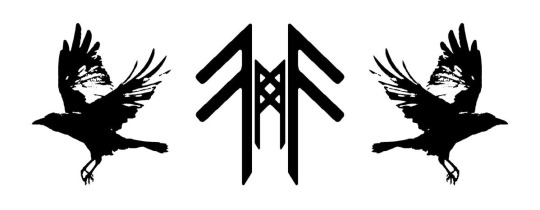
Odin is a wisdom god and a war god, given up his eye for sight in wisdom, may he send blessings upon all of his worshipers.
Herbs •mugwort (oldest of all herbs), plaintain (mother of herbs), stonem, root (drives away evil), wormwood (venom-loather), chamomile, wergulu (maybe chicory), apple, chervil, fennel, chamomile, crab-apple, stinging nettle, mugwort, sweet cicely, corn salad/rampion, monkshood, Amanita muscara, yew, mistletoe, Ivy, juniper, rye, poppy, clover,
Animals• raven, crows, horses, eagle, bear
Zodiac • He was born at the beginning of the time so he doesn't have a birthday... sorry...
Colors • Grey, deep cobalt blue, black, blue
Crystal• gold, amber, and jasper
Symbols• his staff, his horse, raven, hats, runes, tree of Yggdrasil
Jewelry you can wear in their honor• necklaces that remind you of him and rings
Diety of• war, half of the death, heroes, magic, runes, poets, wisdom, rulers, sovereignty, shamanism, the dead, ecstasy (the reasoning in patron), prophecy, healing, royalty, the gallows, battle, victory, frenzy,
Patron of• war, half of death, heroes, magic, runes, poets, wisdom, rulers, sovereignty, shamanism, the dead, ecstasy (the reasoning behind this is that he has epithets calling him this, and also because he holds the item of the magical mead, and he ventures around the world, simply for his own "pleasure", and his historical mentions of fertility around this god, I may be wrong but I do think he is also a fertility god, and since ecstasy is also believed to be caused to be from desire, and since he inspires the desire for poetry that could also be a point, and also his ecstasy for war, also contributing for his desire for knowledge.), prophecy, healing, royalty, the gallows, battle, victory, frenzy, intoxication,
Offerings• Your blood (not from your wrists or any heat points because that could mean ur livelihood ur offering to him, and he had human sacrifices to him back then, but please be careful, and please sterilize the tools before and don't do this as self-harm get away, he will get pissed!), apples, arizona tea (UPG), books, stuffed animals of his animals, tree imagery, toys of thrones, imagery of thrones, wine (he does not drink or eat food, for wine is both water and food for him, so his dogs eat his food, so make sure to keep in mind wolf/dog-friendly food, like spices/etc.), dog treats, meat, rye, thorns (from a myth when he put a valkyrie to sleep as a consequence for sabotaging a battle), mead, beer, ale, fruit, berries, vegetables, Spearlike vegetables (ex- leeks, asparagus, garlic)
Devotional• Learn runes, write runes on flashcards and bottle caps or play cards or coins to learn them, study, do your homework, research things you are interested in his honor, take care of yourself, think out of the box, learn new skills, set boundrys, donate to war veterans and animal shelters in his name, drink alcohol or something you love to him (raise a glass to him ), eat 3 meals a day, work on communication skills, learn cartomancy/pyromancy/shufflomancy, honor your ancestor, write down and interpret your dreams, work with veterans, do community service in his honor, learn basic med, face your fears, create things that remind you of him (art, tapestry, baked goods, etc)
Ephithets• “Master of Ecstasy”, "all father, "raven-god", "army-god", “Father of Men”. “Gautr of Men”, “The Ancient Gaut, “Delight of Frigg”, “Eagle-headed One”, “Attacking Rider” or “Attacker by Horse", “Wealth Friend”, “Enemy of the Wolf ”, “Father of Balder”, “Feeble Eye/Flame Eyed”, “Shield Shaker/Spear Shaker”, “Feeble Eye/
One Eyed”, “Bear”, “Blind One”, “Bale-worker”, “Battle Enhancer”, “Chieftain”, “Brother of Vili”, “Brown One”, “Son of Borr”, “Spearman”, “Lord of Ghosts”, "Sole Creator of Magical Song", “One with a Straight Forehead”, “Ever-Booming”, “Dweller in Frigg’s Embrace", “First Husband of Frigg”,
“Father of Magical Songs”, “Cargo God”, “Journey-Empowerer”, “Burden of Gunnlöð’s Arms”, “Gallows’ Burden”, “Snatch” or “Gain”, “Mighty God”, “Mighty Thule (Poet)”, “Very-Wise/Concealer”, “Much Wise”, “Lord of the Earth”, "One Who Rides Forth”, “The Found”, “Contrary Advisor/Gainful Council”, “Father of Galdor (Magical Songs)”, "Gallow’s Lord", “Wanderer", "Journey Advisor”, “One in a Gaping Frenzy”, “One from Gotland”, “Gautr” (Latinized Langobardic version), “Dangler”, “Spear Inviter”, “Spear God”, “Spear Master”, “Spear Charger”, “Guest”, “Blind Guest”, “Deceiver, “Riddler”, “Seducer”, “Goði (priest) of the Raven-offering”, “God Protector”, “Yeller", “Wand Bearer”, " King of Hliðskjalf", “The Masked One/The Hooded One”, "Gunnlod’s Embracer", “Warrior", “Battle Blind", “Master of Fury” (Romanised Langobardic ), “Master of Fury” (Westphalian), "Skillful Worker”, “Hanged God”, "God of the Hanged", “Hanged One”, “Ruler of Gods”, “God of Gods”, “Teacher of gods”, “Fetter Loosener”, “High One”, “Grey Beard", “One Eyed”, “Lord of Hliðskjalf”, “High One”, “Visitor of the Hanged”, “Blinder With Death/Host Blinder”, “Hang Jaw”, “Host Father”, “Host Gautr”, ” Host Lord”, “Host Glad/Glad of War/Glad in Battle”, “Host God”, “Battle Wolf”, “God of battle”, “Engager of Battle”, “Helm Bearer”, “Screamer” (that's very ominous..), “Famous Lord/Mound Lord”, “Inciter/Thruster/Shaker”, “One Eyed”, “Hatter", “High One”, “Raven-tester”, “Raven God", “Fetterer/Ripper", “Blusterer”, “Roarer”, “Lord of Gods”, “God”
Hrossharsgrani – “Horse-hair Mustache”, “Whet Courage (Mood)”, “Roarer”, “Splendid Ruler”, “Just As High”, “Yellow-brown Back”, “Gelding”, “Iron Grim”, “Horse-wolf/Bear”, “Yule-father”, ”Yule", “Mighty One”, “Old Man”, “Nourisher”, “Long Beard”, “Shaggy Cloak Wearer”, "Lord of Light"
"Lord of the Wild Hunt", “Son of Borr”, “User/Enjoyer”, “Frenzied One” (Old Norse), “Frenzy”, “Divine Inspiration”, “Breath", “Opener”, “Boomer/One Whose Voice Resounds”, “Wished For/Fulfiller of Desire”, “Master of Fury”, “Red Moustache”, “Wagon God”, “Chief”, “God of Runes”, “Mover of Constellations”, “Truth Getter/He Who Guesses Right”, “Truth”, “The Truthful”, “Longbeard”, “Slouch Hat” or “Broad Brim” or “Deep Hood”, ”Long Beard,” “Broad Beard”, “Victory Bringer”, “Father of Victory”, “Victory Gautr”, “Victory Protection”, “Victory Author”, “Victory Tree”, “Victory Successful", “Victory Sure”, “Victory God”, “King/Trembler”, “Treachery Ruler”, “Son of Bestla”, “Friend of the Goths” "Speedy One", “Luller to Sleep/Dream", “Fleeting/Changeable”, “Wise One”, “Wise One”, ”Sweller", “Welcome One”, “Quarreler/Raging, Furious”, "Third”, “Triple”, “Burgeoning/Inciter to Strife”, “Strength”, “Sweller”, “Lean/Pale”, “Double”, “Twice Blind”, “Beloved”, “Foe of the Wolf ”, “Dangler", “Wayfarer”, “Swinger of Gungnir”, “Awakener/Vigilant”, “Ruler of Gallows”, “Ruler of Heaven”, “Father of the Slain”, “Slain Gautr/Gautr of the Slain”, “Chooser of the Slain”, “Slain Tame/The Warrior”, “Slain God”, “Slain Receiver”, “Wayfarer/Waytamer”, “God of Men/God of Being”, “Stormer/Ruler of Weather”, “Contrary Screamer”, “Killer”, “Swinger”, “Friend of Loptr”, “Friend of Lóðurr”, “Friend of Mímir”, “Friend of Altars", “Master of Fury” (Gothic), “Dangler”, “Phallus”, “Smith of Battle”, “Master of Fury” (Allemanic, Burgundian)", “Master of Fury” (Frisian), "Wise Victory Tree", “Wolf”, "Wolf’s Danger", “Wish”, “Terrible One”, “Stormy”
Equivalents• Mercury (Roman), Indra (Hindu), Thoth (egyptation)
Signs they reaching out• seeing his signs, seeing him in a dream, seeing his family and him in dreams, seeing his animals, seeing imagery of him.
Vows/omans• seeing his animals, his blood pact of brothership with loki, and his marriage vows.
Number• 9
Morals• questionably lawfully chaotic
Courting• Frigg
Past lovers/crushes• Jord, some say Freyja, and some say he's married to Freyja and Frigg.
Personality• trickster, his deminer can change easily, one saga describes Odin, “when he sat with his friends, he gladdened the spirits of all of them, but when he was at war, his demeanor was terrifyingly grim.” this shows that he can be a very kind and accepting deity, but he also has another side, so when worshiping his war epithets be aware of this, he is quite competitive. He is also serious and demands respect.
Home• Vahalha
Mortal or immortal • mortal
Fact• He often changed genders just to get passed obstacles
Curses• no knowledge, not being able to go home or know who you are.
Blessings• knowledge, someone coming out of a battle as the victor
Roots• Germanic paganism, perhaps rooted from the Anglo- Saxon gods
Friends• Mimir, loki used to be his friend, Frigg (his wife), Lóðurr, loptr
Parentage• Bestla, and Borr
Siblings• Ve and Vili, loki
Pet• 2 talking ravens called Huginn and Muninn, a magical horse called, Sleipnir, two wolves called Geri and Freki,
Children • Thor, Balder, Hod, Hermod, Heimdall, Vidar, and Vali.
Appearance in astral or gen• Odin is frequently portrayed as one-eyed and white long-bearded, long-haired, wielding a spear named Gungnir or appearing in disguise wearing a cloak and a broad hat and a golden ring, and in the 'astral' he can be seen as anything, but mostly in a human-like form (never seen him in a dream or astral personally.)
Festivals • Yule.
Day • Wednesday.
Status• Ruler of Asier, the father of the gods, has an army of the dead, powerful.
What angers them• disrespect, betraying oaths, and ignoring him.
The music they like• I take it Viking and hunting and gothic/metal music.
Planet• Murcery
Tarot cards• hanging man, the magician, the priestess, the chariot, the
hermit, death, suit of swords.
Reminds me of• goth, bikers (motorcycles), yelling
Scents/Inscene • sandalwood, sage, cedar, mugwort, basically all his herbs except the dangerous ones.
Prayers• Prayer for Wisdom in Teaching
Allfather, Ancient One Eye-plucked Wanderer Teacher of Runes and Mead-stealer Bless me, keep me As I wander and in gift-for-gift, Teach others from Your path
https://sarenth.wordpress.com/2011/02/24/prayers-to-odin/
The Ninefold Blessing of the Allfather
Grace me, Father, with the blessings of the breath of life, and, with the lips that shape the ond into forms beautiful and terrible Grace me, Father, with the blessings of the Runes, with the markings that break fetters and heal the sick Grace me, Father, with the blessings of wisdom, with the discernment and care it brings, with the faculties to use it properly Grace me, Father, with the blessings of pain, with the forging and strength it bestows, with the edge it sharpens Grace me, Father, with the blessings of inspiration, with the knowledge and comprehension it gives, with the ways it opens Grace me, Father, with the blessings of joy, with the openness of receptivity and growth, its seeds, with the way it enlivens life Grace me, Father, with the blessings of power, with the ability to choose and stand firm, with the ability to change the world around me Grace me, Father, with the blessings of intelligence, with the ability to comprehend and deduce the meaning of things, to understand the world in all its complexities Grace me, Father, with the blessings of faith, with the trust and determination to embrace it, to always reach to understand You and the World better, in all the ways I can
https://sarenth.wordpress.com/2011/02/24/prayers-to-odin/
Links/websites/sources • https://www.britannica.com/topic/Odin-Norse-deity https://norse-mythology.org/gods-and-creatures/the-aesir-gods-and-goddesses/odin/#:~:text=As%20mentioned%20above%2C%20Odin's%20name,can%20take%20countless%20different%20forms. https://www.worldhistory.org/odin/ https://en.wikipedia.org/wiki/Odin https://wytchofthenorth.wordpress.com/2013/04/16/odin-and-herbs-ask-me-about-odin/ https://wanderingwomanwondering.wordpress.com/2017/06/22/deity-offerings-series-for-odin/ https://www.norseshamanism.online/blog-norse-shamanism/offerings-to-odin-and-how-to-make-offerings-to-odin https://www.northernpaganism.org/shrines/odin/writing/altars-and-offerings-for-odin.html https://odindevoted.wordpress.com/2013/07/26/offerings/https://study.com/academy/lesson/yggdrasil-the-tree-of-life-norse-mythology-symbol.html#:~:text=Yggdrasil%20is%20a%20tree%20in,god%20in%20the%20Norse%20pantheon. https://www.tumblr.com/alder-bos/669862051714318336/deities-and-their-tarot-cards-long-post
I use resources, I do not own the info, and most deep dives have UPG (that I use in my work.) And I only take some information from sources. I am 14, this is my hobby, I am learning but I spent many hours and days on this, and I am always open to criticism. I have been doing worship for 5 years. Please know you can use the info, I do not sue, but I will take action if this work is used without permission and not put as a resource if used in any work. without permisson and not put as a resource if used in any work, for the public.
ODIN DOES NOT SUPPORT NAZIS
#hellenic polytheism#the gods#hellenic devotion#hellenic worship#doing the research for you#hellenic#norse heathenry#heathers#heathenry#norse polytheism#norse pagan#norse heathen#heathenism#odin#odin allfather
17 notes
·
View notes